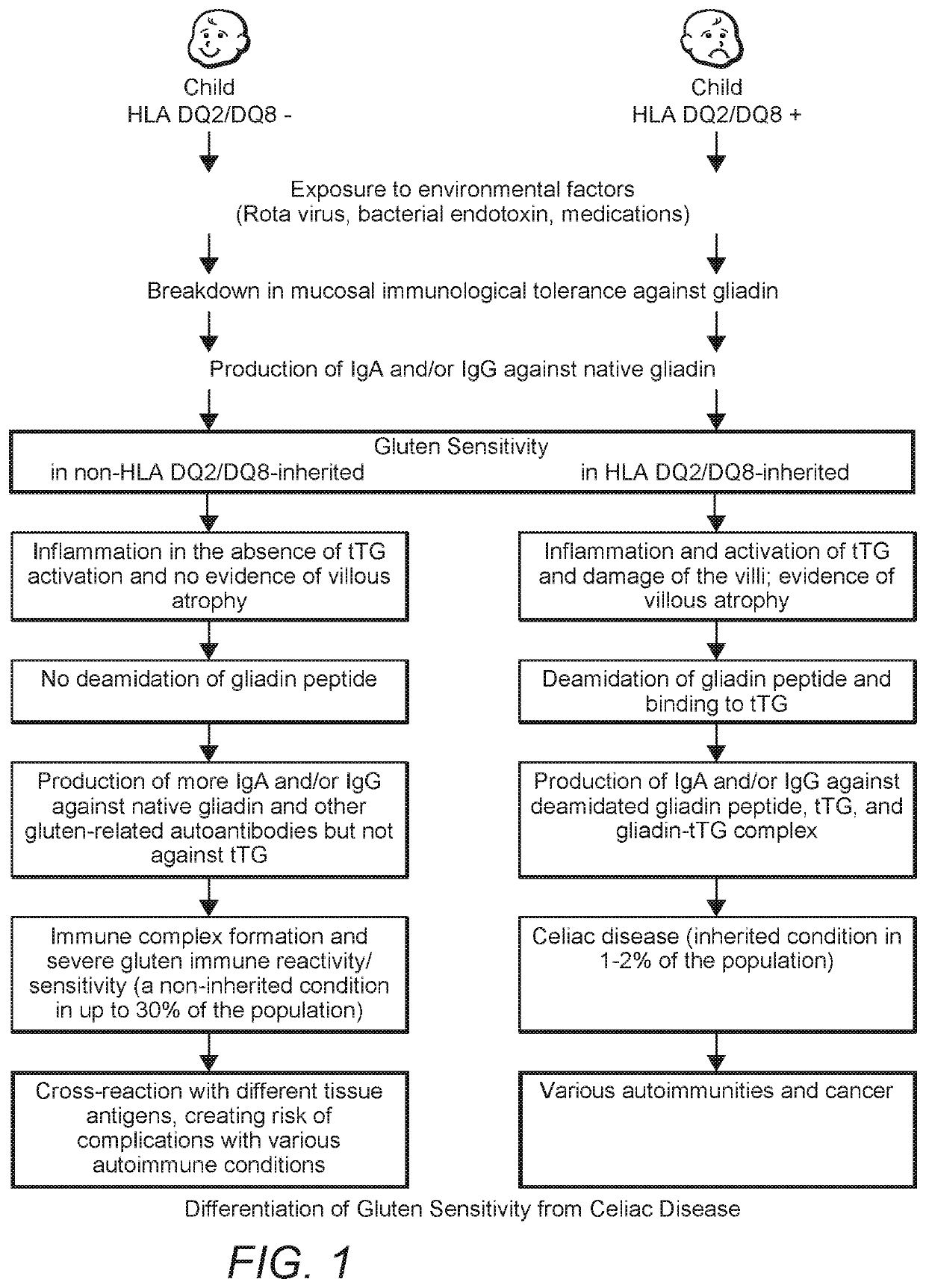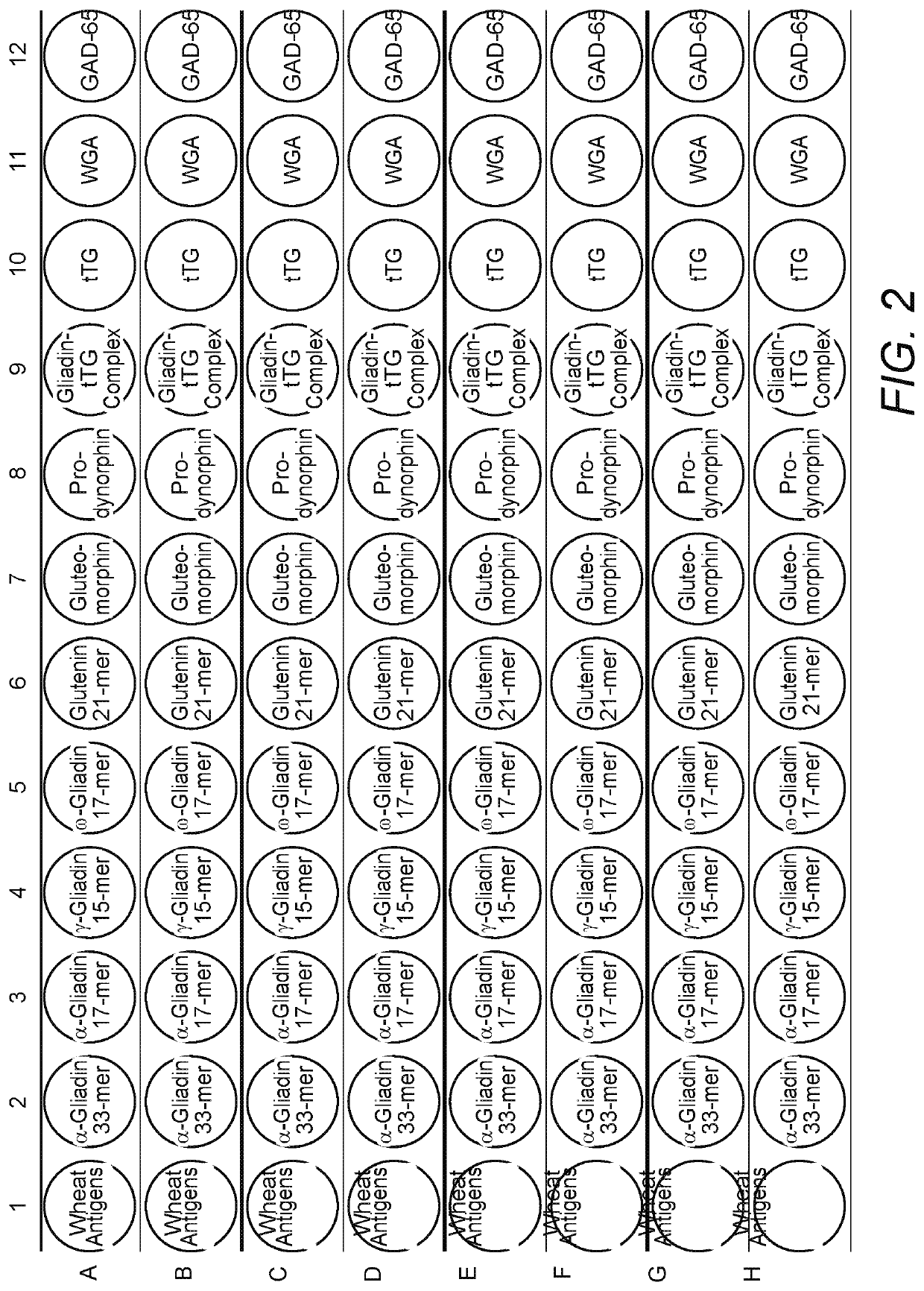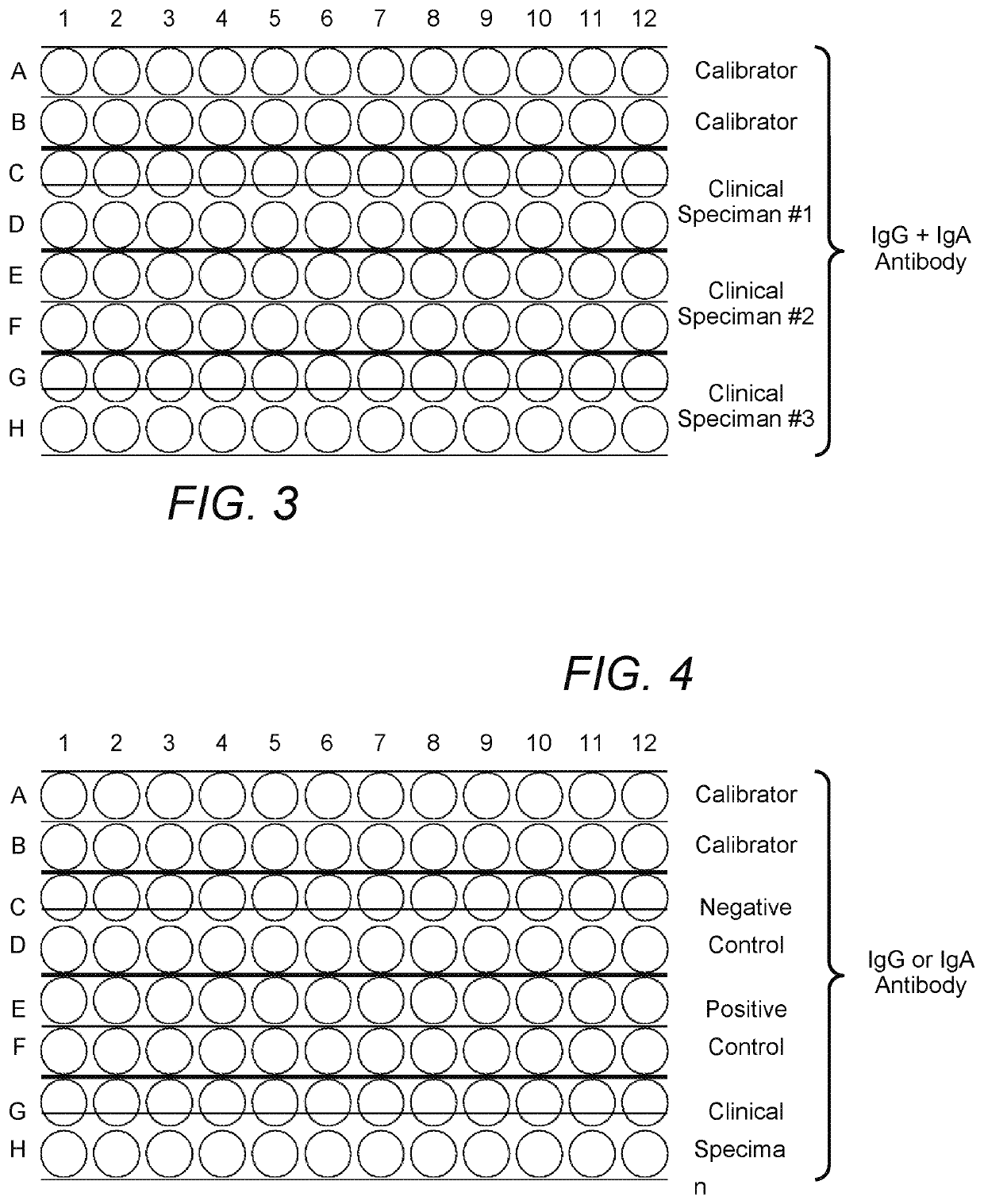Methods and apparatus for detection of gluten sensitivity, and its differentiation from celiac disease
a technology of gluten sensitivity and detection method, which is applied in the field of methods and apparatus for detection of gluten sensitivity, and its differentiation from celiac disease, can solve the problems of gs an extremely dangerous disorder, full-blown autoimmunity, and implementation of a gluten-free diet might not be able to help reverse the course, so as to help distinguish gluten immune reactivity or sensitivity
- Summary
- Abstract
- Description
- Claims
- Application Information
AI Technical Summary
Benefits of technology
Problems solved by technology
Method used
Image
Examples
example 1
[0035]ELISA Assay
[0036]A. Materials and Methods—Plate and Sample Preparation:
[0037]Wheat antigens and peptides. A mixed wheat antigen preparation (i.e. whole-wheat antigen) was prepared by combining water-soluble and alcohol-soluble proteins. Different peptides included glutenin 21-mer (SEQ ID NO. 15, SEQ ID NO. 16) and gliadin peptides including α-gliadin 33-mer (SEQ ID NO. 1, SEQ ID NO. 2), α-gliadin 17-mer (SEQ ID NO. 6, SEQ ID NO. 7), γ-gliadin 15-mer (SEQ ID NO. 10), and ω-gliadin 17-mer (SEQ ID NO. 13, SEQ ID NO. 14). In some embodiments deamidated peptides corresponding to one or more of these sequences were produced by synthesizing a peptide sequence corresponding to the sequence of the corresponding native peptide when subjected to transglutaminase activity, where the resulting synthetic peptide reflected a sequence deamidated at transglutaminase-susceptible sites. For example, in some instances a deamidated glutenin 21-mer peptide (SEQ ID NO. 16) was provided by synthesis ...
case study examples
[0059]Four different case reports, the first on a patient with celiac disease, the second with 10 gluten sensitivity, the third with gluten sensitivity and autoimmunity, and the fourth with gluten sensitivity overlapping with Crohn's disease are shown below.
[0060]A. Case Report #1: Diagnosis of Celiac Disease in the Elderly by the Use of IgA against Gliadin and Tissue Transglutaminase with Improvement on a Gluten-Free Diet
[0061]A 76 year-old man with longstanding dyspepsia, indigestion, tiredness and rapid weight loss was referred for gastrointestinal evaluation. Blood tests showed macrocytic anemia with low concentrations of folate and vitamin B-12. The patient's hemoglobin concentration was 79 g / L, albumin 32 g / L, and transglutaminase 212 μg / mL (normal range=0-10 μg / mL. An urgent colonoscopy and duodenal biopsy was performed, which yielded macrocospically normal results. At this level his IgG and IgA concentrations against gliadin and transglutaminase were checked using FDA-approv...
PUM
 Login to View More
Login to View More Abstract
Description
Claims
Application Information
 Login to View More
Login to View More - R&D
- Intellectual Property
- Life Sciences
- Materials
- Tech Scout
- Unparalleled Data Quality
- Higher Quality Content
- 60% Fewer Hallucinations
Browse by: Latest US Patents, China's latest patents, Technical Efficacy Thesaurus, Application Domain, Technology Topic, Popular Technical Reports.
© 2025 PatSnap. All rights reserved.Legal|Privacy policy|Modern Slavery Act Transparency Statement|Sitemap|About US| Contact US: help@patsnap.com



